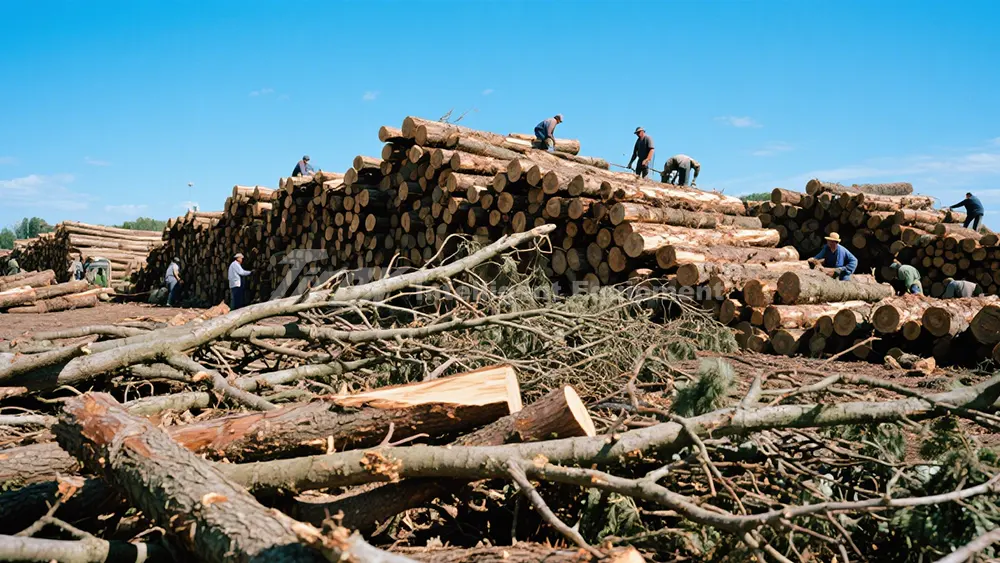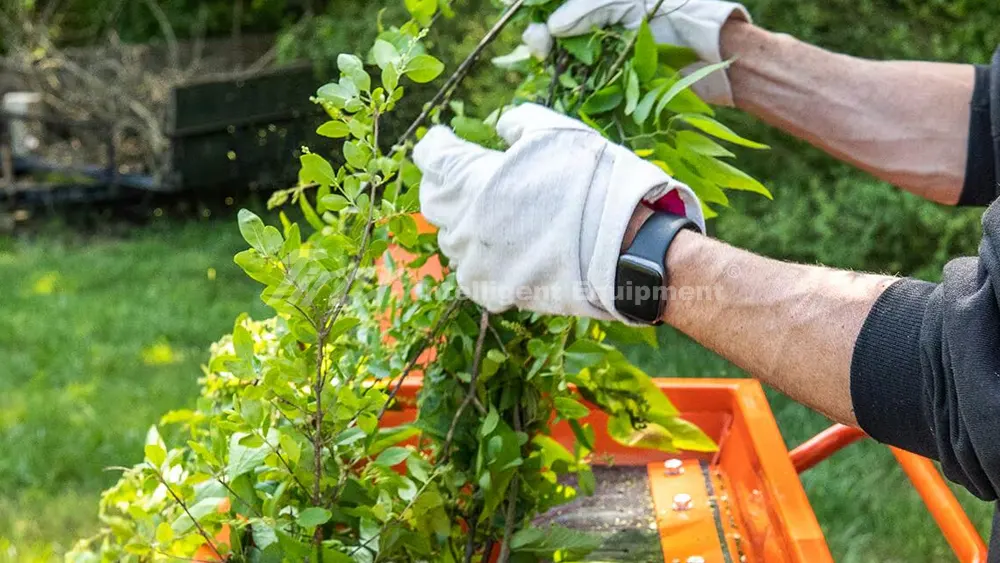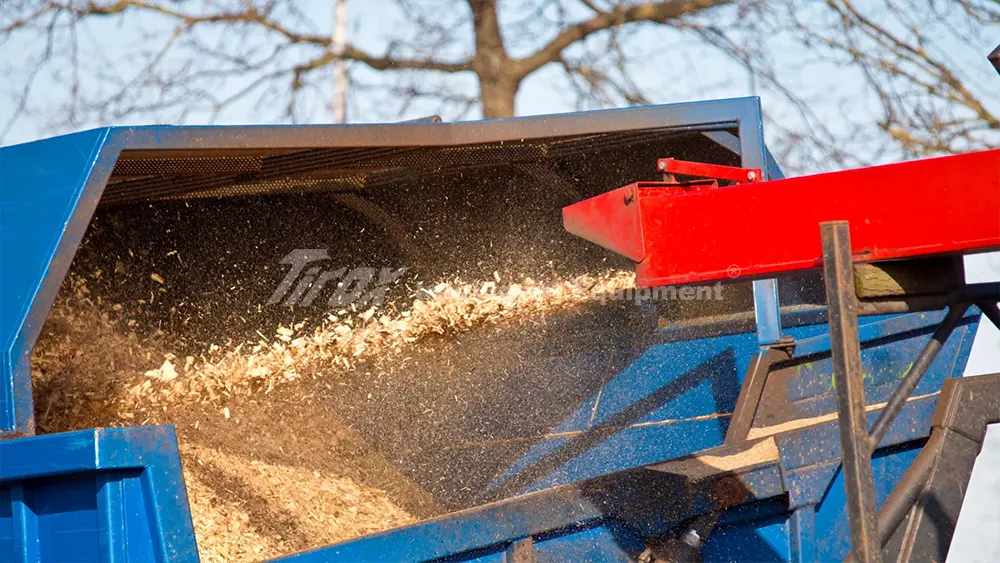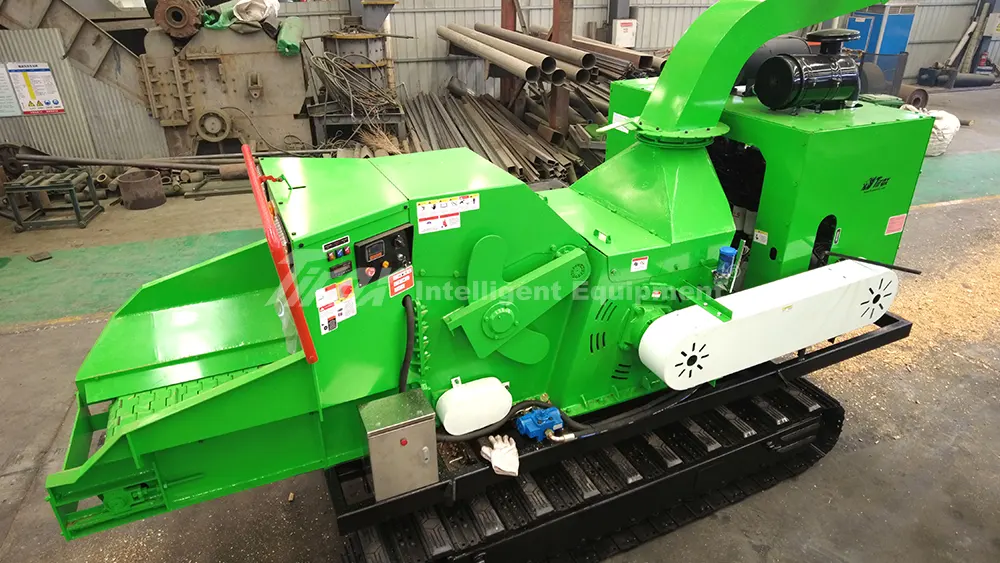Got old clothes or fabric scraps piling up? Thinking your wood chipper could make quick work of them? This might seem like a fast solution, but it can lead to big problems for your machine.
No, you generally cannot and should not shred fabric in a standard wood chipper. Fabric can wrap around moving parts, cause severe clogs, damage the machine, and create safety hazards. Wood chippers are designed for woody materials, not textiles.
Wood chippers are amazing tools for breaking down branches and logs. But they have their limits. Putting the wrong material in, like fabric, can be costly and dangerous. It’s important to understand what your machine is built for. Let’s explore why fabric is a definite no-go for your wood chipper and look at what makes different machines suitable for different tasks.
Difference Between Wood Chipper & Shredder?
Confused about whether you own a chipper or a shredder, or maybe a chipper-shredder? They can look similar, but using them for the wrong job can cause a lot of frustration and even damage your equipment. Understanding the difference is really key to getting your work done right.
Wood chippers use sharp knives or blades mounted on a spinning drum or disc to slice branches and woody material into small chips. Shredders, on the other hand, typically use blunt hammers or flails to crush, tear, and pulverize softer, more varied organic materials like leaves, twigs, or sometimes even fabric if the shredder is specifically designed for it.

I’ve seen many machines over 22 years at TIROX. We make chippers. Chippers have sharp knives. These knives spin fast. They slice wood against a metal edge. This is like slicing vegetables with a sharp knife. The result is small pieces of wood called chips. These chips are usually pretty uniform in size. You use a chipper for branches and small logs. The knives are set at an angle to slice efficiently. Shredders are different. They use heavy metal pieces called hammers or flails. These hammers are hinged or fixed to a rotor. They spin very fast inside a chamber. When you feed material into a shredder, these hammers beat and tear it apart into smaller bits. This is like smashing something instead of slicing it. Shredders are good for leaves, garden waste, and sometimes paper. They handle material that isn’t rigid, material that would just bend away from a chipper’s knives. Some machines are called chipper-shredders. These have two parts. One part is for chipping wood. The other part is for shredding softer material. It’s important to know which type of machine you have. Putting soft, stringy things like fabric into a chipper’s knife system will cause big issues. The fabric doesn’t get cut cleanly by the slicing knives. It tends to get pulled in and immediately wraps itself tightly around the cutter drum or disc. It also wraps around the feed rollers, if the machine has them. This wrapping motion causes the machine to slow down suddenly or stop completely. It puts immense stress on the bearings, belts, and the engine. Removing the tangled fabric is hard and dangerous. You often need to use tools to carefully cut it away from the moving parts. It takes a lot of time. This means the machine is broken until you fix it. Knowing the difference between these machine types saves you time and money. It also keeps you safe.
How Chippers and Shredders Process Material:
| Feature | Wood Chipper | Shredder (Standard) |
|---|---|---|
| Cutting Action | Slicing (Knives) | Tearing (Hammers) |
| Material Type | Rigid wood, branches | Soft waste, leaves |
| Output | Chips | Mulch |
| Fabric | No | Usually No, maybe specific industrial ones |
So, if you’re dealing with branches and wood, a chipper is your tool. If it’s mostly leaves and soft garden debris, a shredder is better. Trying to use one for the other’s job usually leads to poor performance or problems.
What not to put in a wood chipper?
It can be tempting to think of your powerful wood chipper as an all-purpose disposal unit for various types of waste. However, feeding the wrong things into it can quickly destroy your machine and, more importantly, create very serious safety risks. Knowing the “do not chip” list is absolutely crucial for safe operation.
Never put metal, stones, plastic, glass, rubber, or fabric into a wood chipper. Only clean wood and woody biomass are safe for these machines. Foreign objects can cause catastrophic damage to the blades, become dangerous projectiles, and can lead to severe injury to the operator or bystanders.
My years building these machines taught me what happens when people ignore the rules. Wood chippers are made for wood. The blades are sharp and strong, but they are made to cut organic fibers. They are not made to hit hard, non-organic things. Metal is one of the worst things. Even a small nail can be a huge problem. If a metal piece goes in, it hits the fast-spinning blades. It can break the blade. A broken piece of blade is like a bullet. It can shoot out of the chipper at very high speed. It can hit someone standing near the machine. This is very dangerous. Stones and rocks are also bad. They are hard. They will dull the blades fast. They can also break the blades or the metal plate called the anvil. This requires expensive replacement parts and labor. Plastic is a problem because it doesn’t chip cleanly. Some types can melt from the heat created by friction inside the machine. Melted plastic can gum up the internal workings. Other types of plastic can shatter into sharp pieces that are hard to clean out. Glass will just shatter into countless tiny, sharp fragments. These fragments will fly everywhere, inside and outside the machine. This is a big risk to anyone nearby. Rubber is also bad. Like fabric, it doesn’t cut well with chipper knives. It can stretch and wrap tightly around the turning parts like the cutter drum or the feed rollers. This causes a major jam. It puts too much stress on the engine and drive train components, which can cause them to fail. At TIROX, we build machines with safety features like emergency stops. But no safety feature can stop all problems if someone feeds the wrong material. I recall one time a customer had put a garden hose in by mistake. It wrapped so tightly around the feed roller, they couldn’t get it out without carefully cutting it away piece by piece. It took hours. This showed me again why keeping non-wood out is so important for safety and machine life. Always inspect the material carefully before feeding it. Look for hidden items like old fencing wire in branches or metal brackets on wood pieces.
Hazardous Materials for Wood Chippers:
| Material | Danger | Machine Effect | Safety Risk |
|---|---|---|---|
| Metal | Hard, non-cutting | Blade breaks, damage | Flying debris, injury |
| Stones/Concrete | Hard, abrasive | Blade damage, dulling | Flying debris, injury |
| Plastic | Melts, wraps, shatters | Clogs, damage, fumes | Sharp pieces, fumes |
| Glass | Shatters | Internal contamination | Flying glass, cuts |
| Rubber | Wraps, melts | Clogs, damage | Downtime, burns |
| Fabric | Wraps, tangles | Severe clogs, damage | Downtime, injury risk |
Always inspect what you’re feeding. The rule is simple: if it’s not clean wood, don’t chip it.
Can you use a wood chipper to shred leaves?
When autumn leaves pile high in your yard, you might look at your wood chipper and wonder if it can be your cleanup hero. It seems like a powerful machine should make short work of leaves, right? However, leaves can be surprisingly tricky for a machine designed primarily to chip solid wood.
Most standard wood chippers are not ideal for shredding large volumes of leaves on their own, especially if the leaves are wet. Leaves tend to compact and can easily clog the infeed and discharge chutes of a chipper. Mixing a small amount of leaves with branches might work, but dedicated leaf shredders are far more effective for this task.

When we build chippers at TIROX, we focus on how they handle wood. Wood is rigid. It feeds into the blades and gets sliced cleanly. Leaves are different. They are soft and flexible. When you put a lot of leaves into a chipper, they don’t stand up to the blades for a clean cut. They just get pushed and compacted together. Imagine trying to slice through a thick stack of wet paper with a single knife stroke; it just pushes the stack forward and maybe tears the edges. Leaves do the same thing in a chipper. They form a dense mat inside the cutting chamber. This mat builds up and blocks the flow of material. It often clogs the discharge chute first. This is the opening where the chips come out. If this chute is blocked, the material has nowhere to go. The machine fills up quickly and the engine will struggle or stop. Wet leaves are much worse than dry leaves. They stick together more easily and form a heavier, tighter mat. This makes clogging much more likely. I’ve talked to many customers over the years about chipper problems. A common reason for clogging is trying to chip too many leaves without enough wood mixed in. If you have a few leaves still attached to branches, the chipper will usually handle it fine. The branches provide the necessary stiffness and act like carriers, helping to pull the leaves through the system and break up the matting. But if you feed just loose leaves, especially large piles, it’s very likely to clog your standard wood chipper. This clog needs to be cleared manually, which can be time-consuming and dangerous if you are not careful to ensure the machine is completely off and stopped. For people who need to process large amounts of leaves every year, I always suggest looking at a machine specifically designed for that purpose. This could be a dedicated leaf shredder or a chipper-shredder model that has a separate infeed and mechanism for softer materials like leaves. These machines use flails or other systems that handle the matting nature of leaves much better. Using the right machine for leaves will save you a lot of frustration and keep your wood chipper running well for chipping wood.
Leaf Handling Suitability:
| Material | Wood Chipper Suitability | Why | Alternative Machine |
|---|---|---|---|
| Branches with leaves | Good (if ratio is right) | Branches pull leaves through | Chipper |
| Small amount of dry leaves (mixed) | Okay | Less likely to clog than wet leaves | Shredder (better) |
| Large piles of leaves | Poor | Compacting, clogging risk, matting | Shredder (best) |
| Wet leaves | Very Poor | High risk of severe clogging | Shredder (best) |
If leaves are your main concern, investing in a shredder or a chipper-shredder model might be a better long-term solution.
Conclusion
Never put fabric in a wood chipper; it will cause clogs and damage. Use chippers for wood and shredders for softer material. Always avoid metal, stones, plastics, and glass. Be cautious with leaves.






